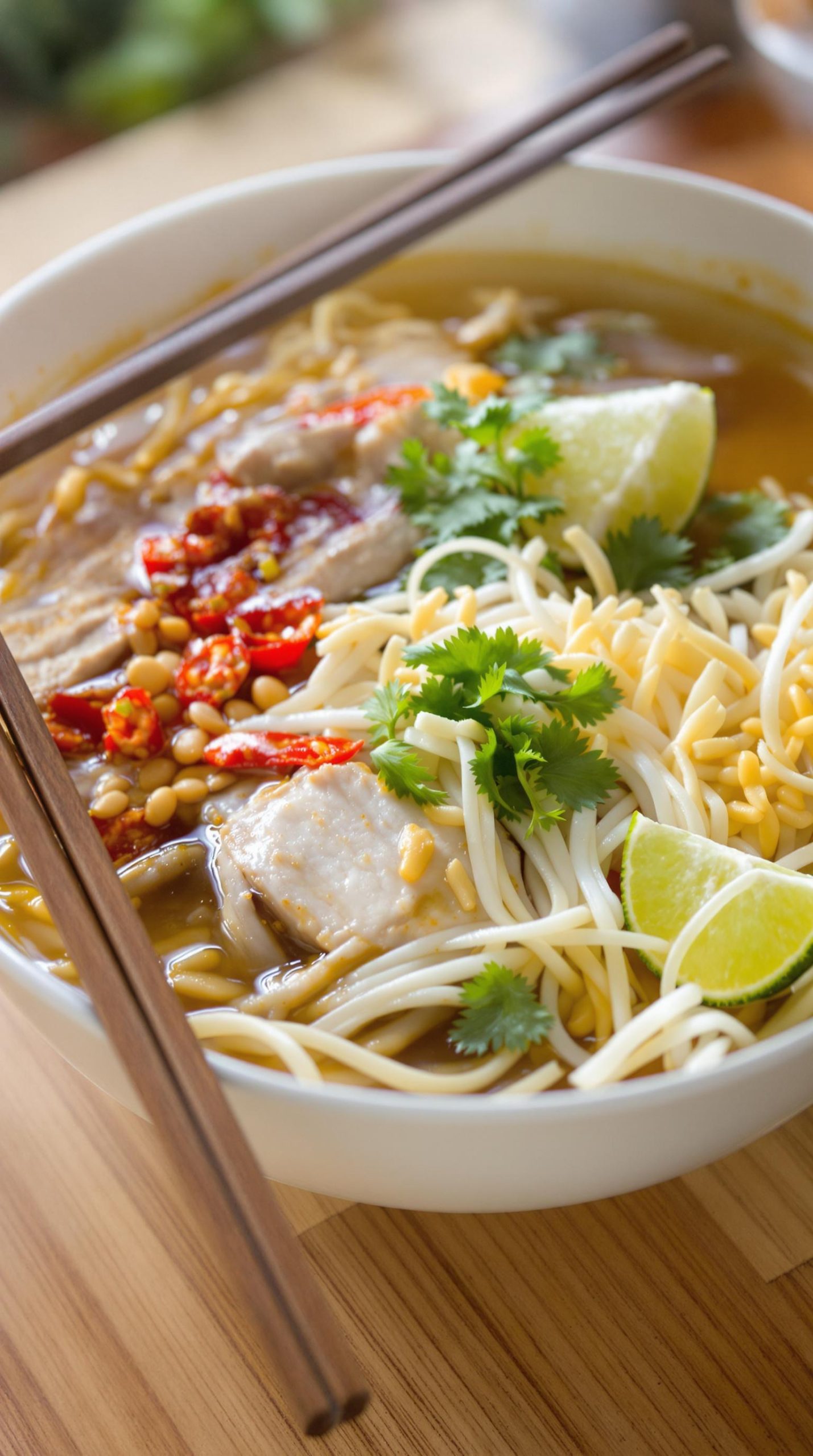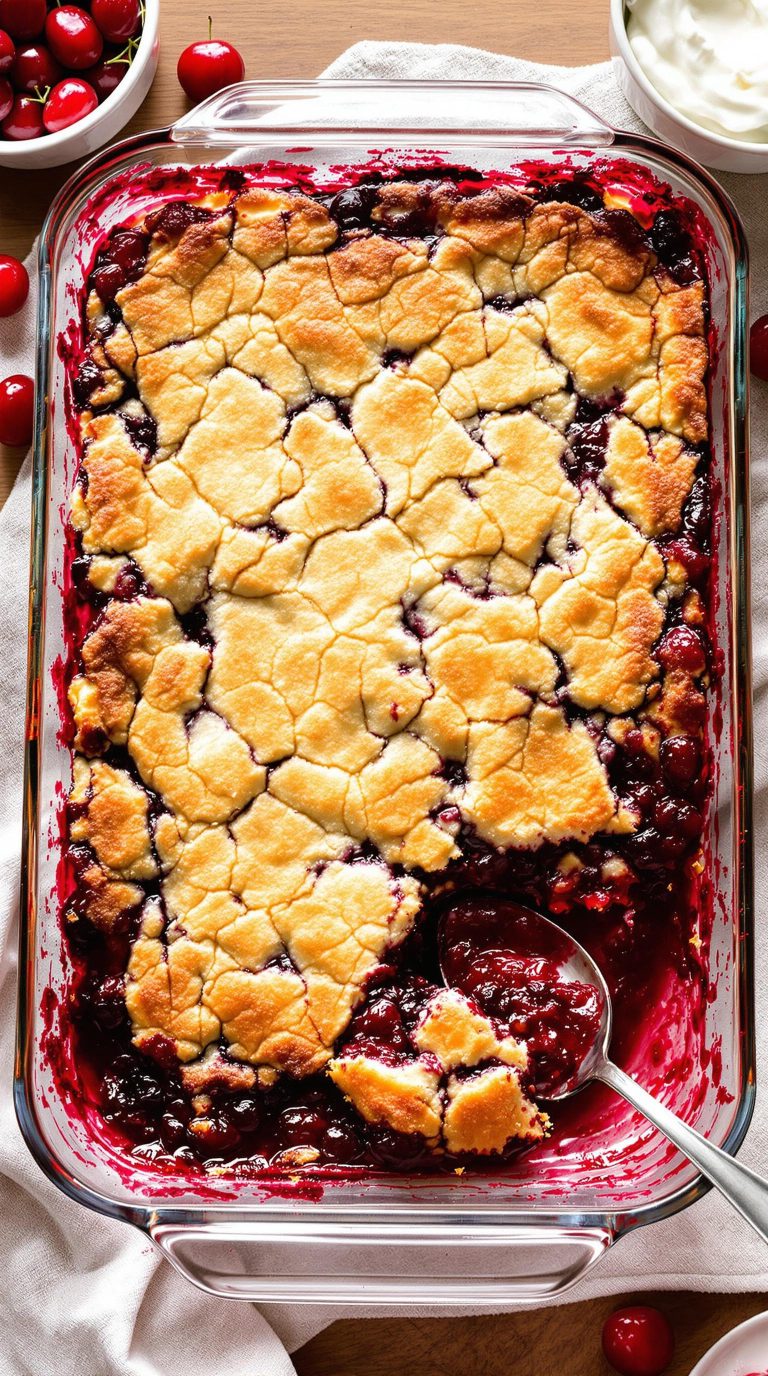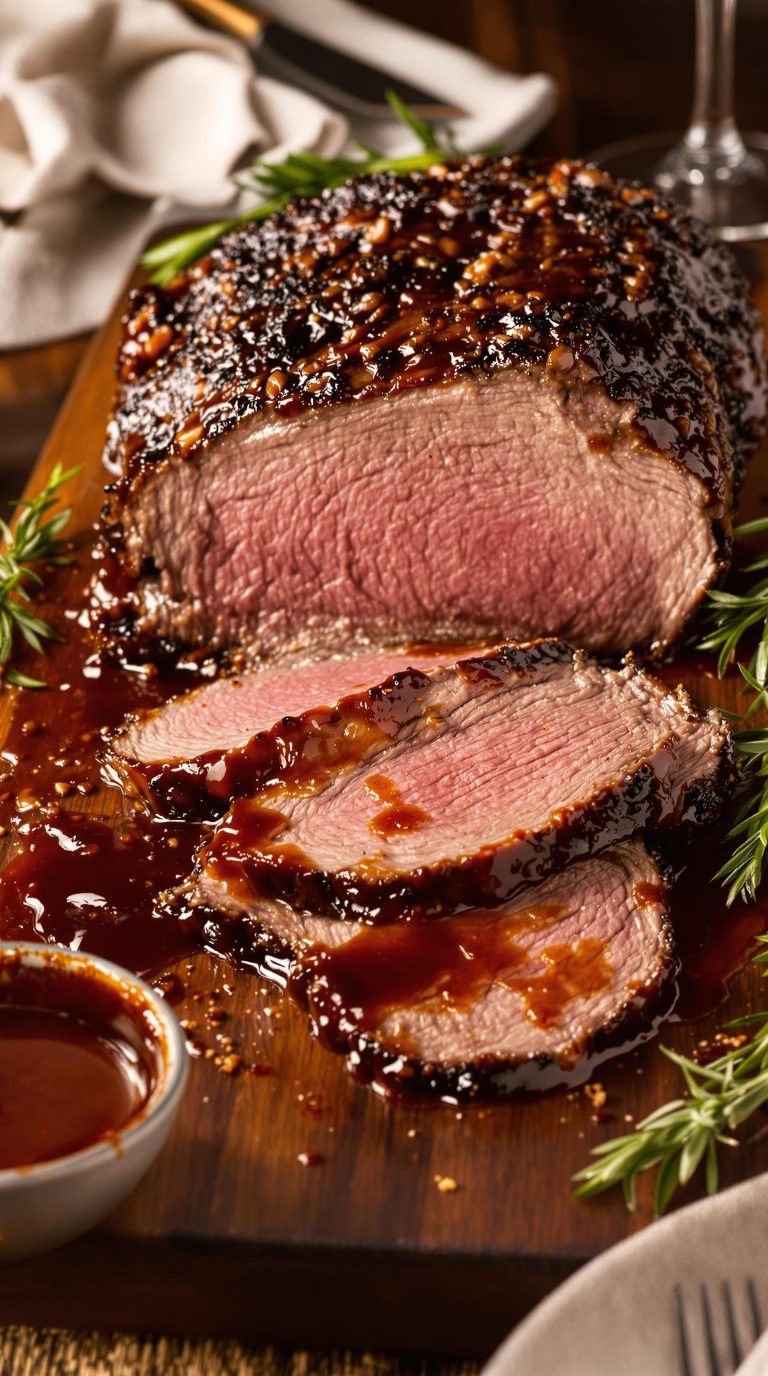Why You’ll Love this Authentic Vietnamese Chicken Pho
Who doesn’t crave a steaming bowl of comfort that transports you straight to the streets of Hanoi? This authentic chicken pho delivers layers of flavor that’ll make your taste buds dance.
I’m talking fragrant lemongrass, zesty ginger, and delicate rice noodles swimming in a rich broth that’s been simmering to perfection.
What I love most? It’s surprisingly doable at home. The combination of tender chicken strips and aromatic herbs creates that perfect balance between hearty and fresh.
Plus, the customizable garnishes mean everyone at your table can make it their own. Perfect for chilly evenings or, honestly, any time you need a soul-warming meal.
What Ingredients are in Authentic Vietnamese Chicken Pho?
The beauty of authentic chicken pho lies in its seemingly simple ingredient list that comes together to create complex, layered flavors. Each component plays a crucial role in building that distinctive Vietnamese profile we all crave. The aromatics infuse the broth with depths of flavor while the fresh garnishes add brightness and texture that makes each spoonful an adventure.
- 2 ounces rice noodles
- 1 piece gingerroot
- 1 garlic clove, crushed
- 4 spring onions, chopped
- 3 tablespoons fish sauce
- 1 stalk lemongrass, chopped
- 3 pints low-fat chicken broth
- 4 ounces raw chicken, sliced in strips
- 1 red chili pepper, finely sliced
- 2 ounces bean sprouts, blanched in boiling water
- 1 ounce ginkgo nuts, crushed
- 2 tablespoons fresh coriander, chopped
- 1 lime
When shopping for these ingredients, quality matters tremendously. Look for fresh lemongrass stalks rather than dried, and make sure your fish sauce is a good brand – it’s the secret ingredient that provides that distinctive umami depth.
The ginkgo nuts might be harder to find, so try an Asian market or specialty store, but don’t skip them if possible – they add a unique texture and subtle flavor that really completes the authentic experience.
And remember, fresh herbs make all the difference in Vietnamese cooking, so grab the brightest bunch of coriander you can find.
How to Make this Authentic Vietnamese Chicken Pho

Creating this soul-warming chicken pho starts with proper noodle preparation. Cook 2 ounces of rice noodles in boiling salted water for four minutes until they’re just tender with a slight bite. Strain and set them aside—don’t rinse them, as that starchy coating helps the broth cling to every strand.
Next comes the aromatic base that gives pho its distinctive character. Take your piece of gingerroot and sauté it on low heat for about 15 minutes, which helps release its oils and mellow its bite. Once cooled, slice it thinly. Then combine this ginger with 1 crushed garlic clove, 4 chopped spring onions, 3 tablespoons of fish sauce, and 1 chopped stalk of lemongrass in your 3 pints of low-fat chicken broth.
Let this fragrant mixture simmer for a full 45 minutes—patience is key here, as this slow infusion creates that depth of flavor that makes pho so addictive. After simmering, strain the broth carefully and discard the solids, keeping that golden liquid treasure. For more complex recipes, a premium meat grinder allows you to create custom meat blends that enhance traditional dishes with unique flavors and textures.
The final assembly brings everything together in perfect harmony. Return your strained broth to heat and add 4 ounces of raw chicken strips, simmering gently for 10 minutes until just cooked through. While that’s happening, reheat your reserved noodles by pouring boiling water over them and draining once more.
Divide these warmed noodles between serving bowls, then ladle the hot chicken-infused broth over top. The magic happens with the garnishes—top each bowl with slices of red chili, 2 ounces of blanched bean sprouts, 1 ounce of crushed ginkgo nuts, and 2 tablespoons of fresh chopped coriander.
Don’t forget to serve with a wedge of lime on the side, as that final squeeze of citrus brightens everything and pulls all the flavors into perfect balance. For those who enjoy making different breakfast dishes, consider how a high end waffle maker could diversify your morning culinary repertoire beyond traditional Asian cuisine.
Authentic Vietnamese Chicken Pho Substitutions and Variations
While traditional Vietnamese chicken pho calls for specific ingredients, you can still create an authentic-tasting bowl even when you’re missing a few components.
No ginkgo nuts? Use crushed peanuts instead for that delightful crunch.
Can’t find lemongrass? A bit of lemon zest can work in a pinch.
Vegetarians might swap chicken for firm tofu or mushrooms and use vegetable broth.
For a spicier version, leave those chili seeds in or add a dash of sriracha.
And honestly, if fresh bean sprouts aren’t available, the canned variety will do just fine.
It’s about capturing that fragrant, comforting essence that makes pho so irresistible.
What to Serve with Authentic Vietnamese Chicken Pho
Now that you’ve mastered the soup itself, let’s talk about what goes alongside a steaming bowl of Vietnamese chicken pho.
I always recommend fresh herbs like Thai basil, mint, and extra cilantro for guests to add as they wish. A small plate of bean sprouts, lime wedges, and sliced jalapeños allows everyone to customize their bowl.
For a complete meal, try serving crispy spring rolls or Vietnamese summer rolls with peanut sauce.
A simple cucumber salad dressed with rice vinegar provides a bracing contrast to the rich broth. Can you imagine anything more satisfying?
Final Thoughts
Three key elements make this authentic Vietnamese chicken pho recipe truly special.
The aromatic broth, infused with ginger and lemongrass, creates a depth of flavor that’s simply transformative. The tender chicken strips, perfectly cooked in that fragrant liquid, become little flavor sponges. Much like fluffy dumplings that absorb surrounding flavors, every component enhances the overall dish.
And those final fresh garnishes? They’re not optional—they’re essential.
I’m convinced that pho isn’t just soup, it’s a culinary experience. The balance of savory, tangy, and fresh elements creates something greater than the sum of its parts.
Don’t rush this dish; good pho demands patience but rewards you magnificently. Unlike quick family meals like Chicken Tetrazzini, this recipe requires time to develop its complex flavors properly.





